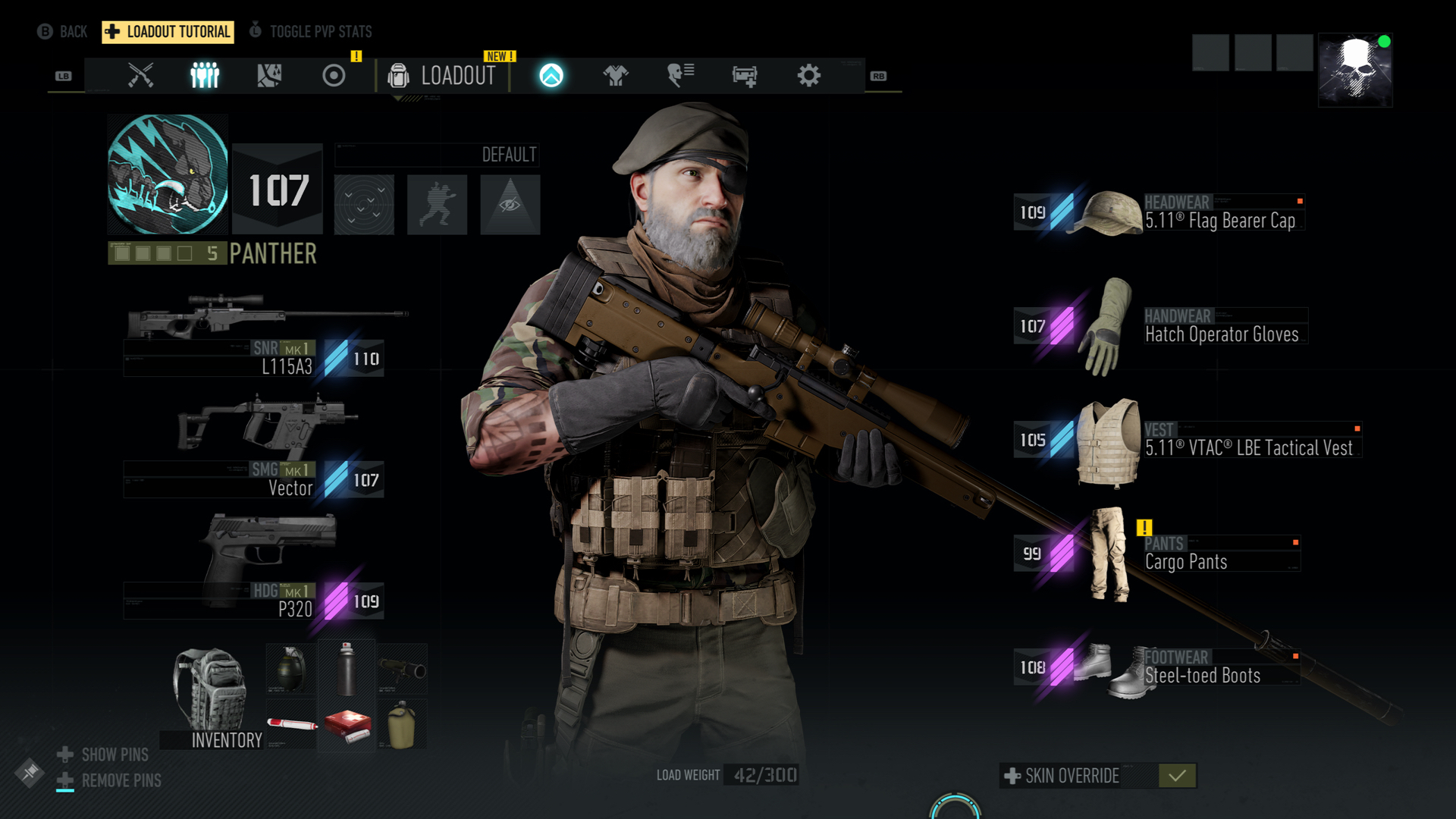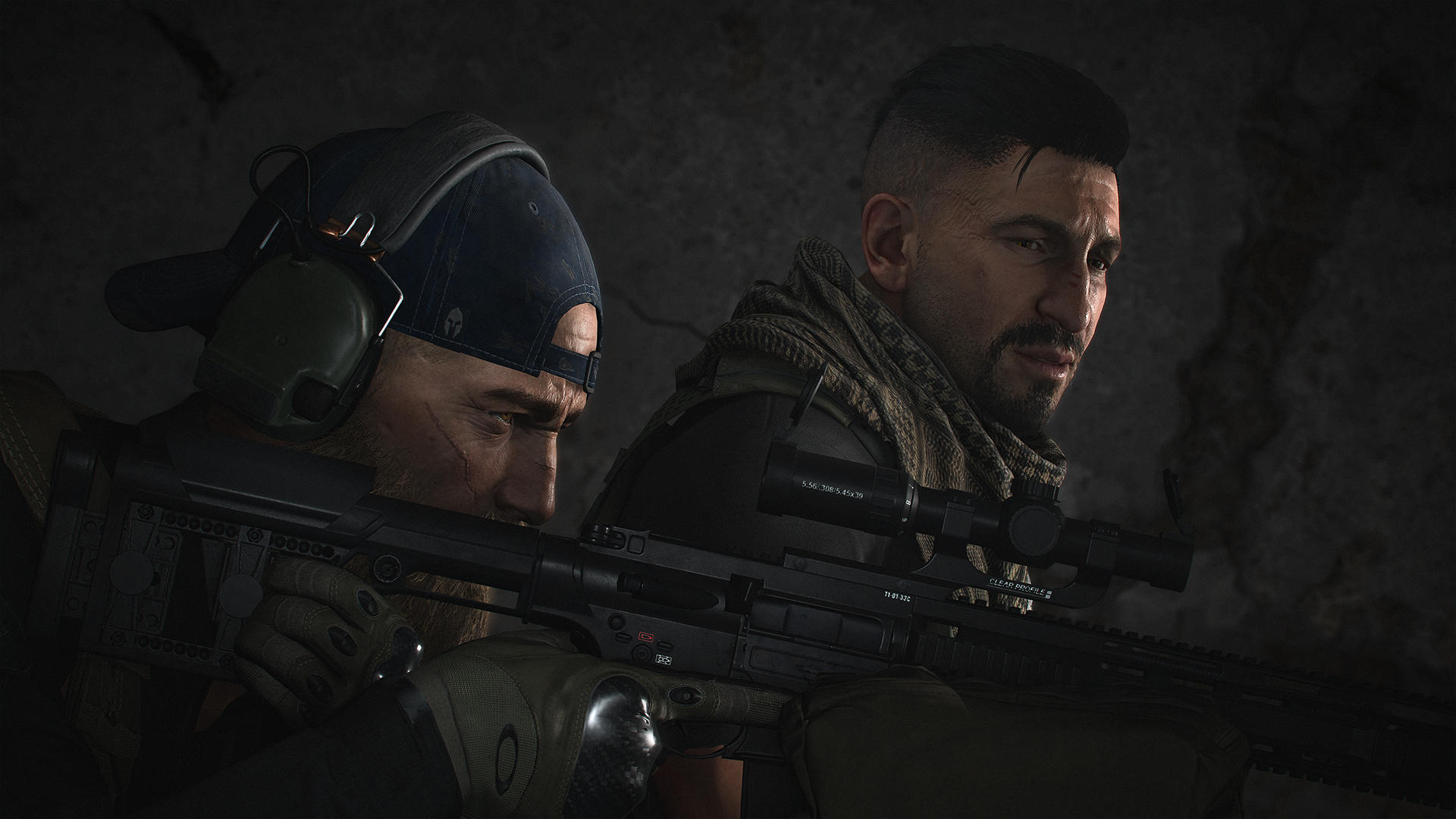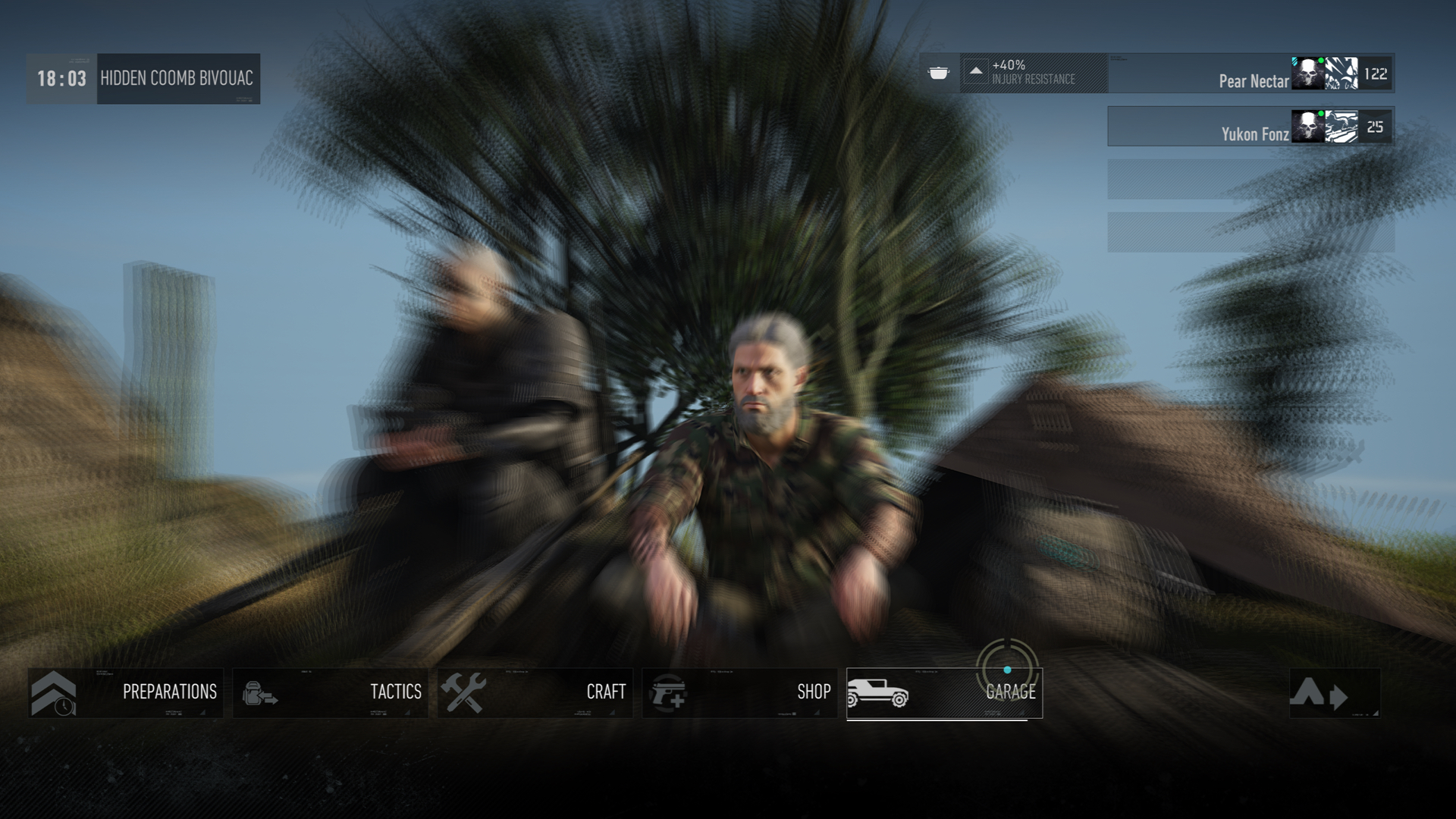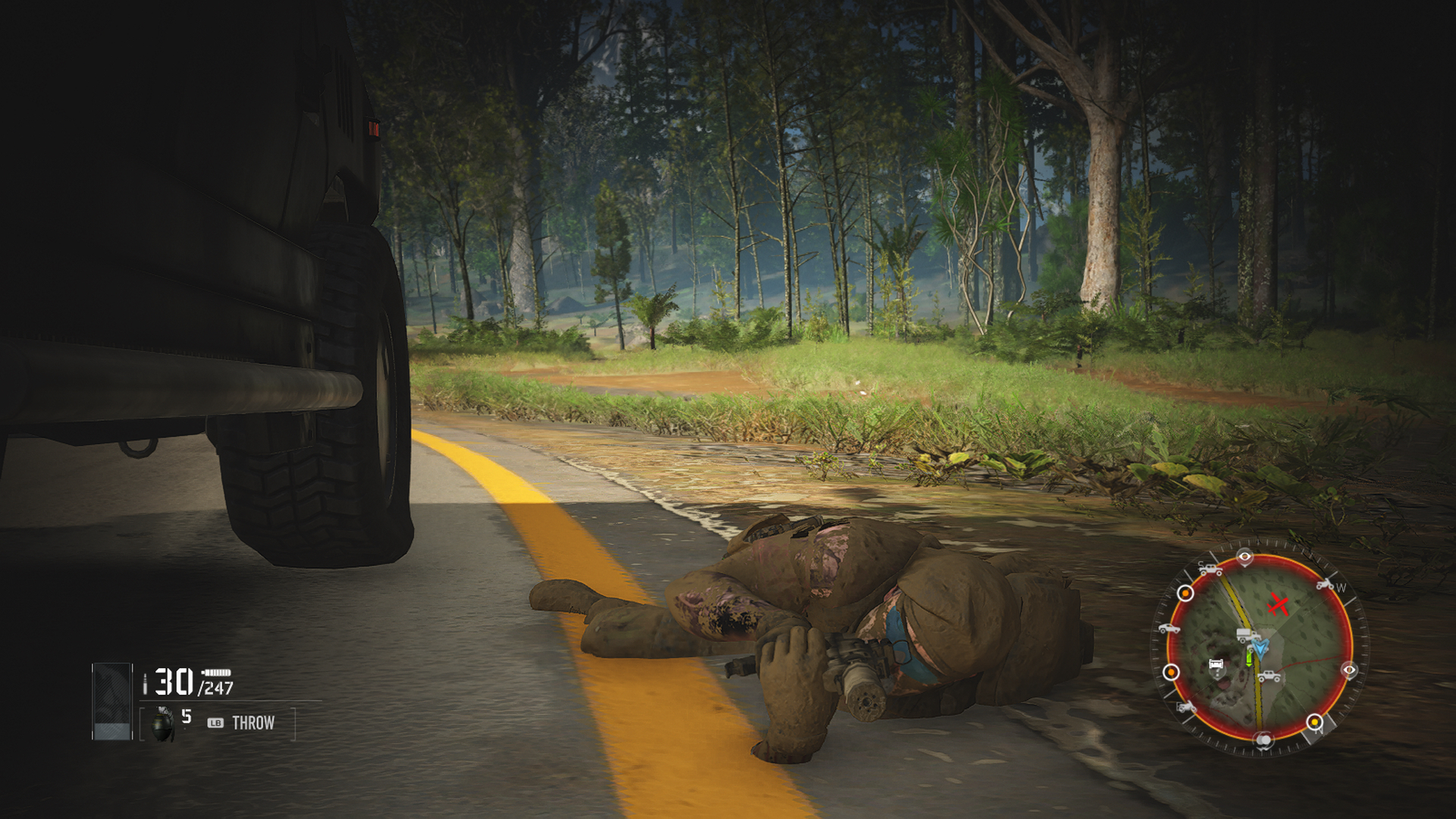Ubisoft is in need of an intervention. Over the past few years, the publisher has gone from dabbling in numbers-based RPG mechanics to having a full-blown addiction to gear levels. The original Division started a tidal wave that eventually washed over the rest of the publisher’s best-selling action franchises. Assassin’s Creed was the most obvious turning point, with Odyssey completing that series’ transformation into a (literal) epic RPG. Then the loot monster came for Far Cry with this year’s Far Cry New Dawn and turned what was once Ubisoft’s most open-ended, straightforward action series into a Frankensteinian abomination. Now Ghost Recon, a series that’s staked its reputation on more realistic military action, has become the latest victim of Ubisoft’s newfound gear fetish.
Yes, I’m mixing metaphors to an obscene degree, but that’s what the latest Ghost Recon game, Breakpoint, is: a jumbled mess of facsimiles that never truly discovers its own identity. It’s an open-world action game pretending to be a compelling military sci-fi thriller whose best intentions are undermined by its thoughtless dedication to looting and a setting that, while ecologically diverse, is about as fun to traverse as it is walking shoeless over burning coals.

Credit: Ubisoft, via the author
It’s clear that the series is still experiencing growing pains after Wildlands shifted from a mostly linear, stage-based shooter to an open-world base-raiding simulator where story became a secondary concern (ironic, considering the title is prefixed with the name of a best-selling author). The Ghost Recon games never had the most compelling stories, but they at least felt grounded and, well, there. In some ways, Breakpoint might be the most memorable story the Ghost Recon series has had, but it trades in geopolitical intrigue for a more personal take on the Ghosts that falls flat every chance it’s given.
Breakpoint’s story relies entirely on a performance from The Punisher’s Jon Berenthal that’s hampered by the game engine’s Halloween mask-like facial animations. The game tasks players with retaking the island of Auroa after Berenthal’s Lt. Col. Cole Walker—a former Ghost—has assumed control with his militia, known as the Wolves. What makes Auroa special, besides its impossible biodiversity, is that it’s the home of Skell Tech, the advanced robotics company known specifically for its drone technology. Upon traveling to Auroa to investigate why a tanker was blown up trying to leave the island, the player’s customizable Ghost, codenamed Nomad, and his or her battalion are attacked by a swarm of drones and almost completely wiped out. As a lone soldier behind enemy lines, the player must not only find and assassinate Walker and his allies but also resume control over Skell’s technology and uncover a plot that will be predictable to anyone who’s ever seen or read a story starring an ideological former soldier who’s leading a private army as the main antagonist.
That might sound fine on paper, but it’s sabotaged by a reliance on flashbacks and by Ubisoft’s own marketing for the game. Walker previously showed up in a Wildlands DLC mission as a good guy, but the reveal trailer for Breakpoint already showed that Berenthal’s approximation of a sociopathic spec op would be the game’s villain. Still, the opening assumes that everyone who’s playing Breakpoint never saw a trailer for the game and formed an emotional connection to Walker just from the Wildlands mission. Walker murdering several helicopters’ worth of his brothers and sisters in arms is supposed to have emotional heft. The entire crux of the game’s personal narrative relies the player, as Nomad, feeling personally betrayed by Walker’s actions. But the hammy flashbacks that are supposed to emotionally contextualize our character’s relationship to Walker only manage to reveal that he was always a psychopathic totalitarian in the making. All the while, you might be asking yourself, Haven’t I seen this story before, just in a much better game? Yes, you have; it’s called Metal Gear Solid 3.

What motivation we have left, then, at least when it comes to the story, is entirely dependent on whether or not you care about saving the reputation of an enormous and enormously irresponsible corporate entity. It’s revealed at some point, depending on if you listen to the optional dialogue, that Jace Skell, Skell Tech’s founder and CEO, purchased the lease for Auroa from the United States government, which had previously leased the island from New Zealand, admitting that avoiding government oversight was one of the island’s main attractions. In the aftermath of Walker’s takeover, Skell seems absolutely blindsided by the fact that his nearly sentient drones could be used for anything other than peaceful applications like aid delivery and crop pollination. That someone like Skell, whose tech company is so successful that he can afford to lease an entire island, is caught off guard by his drones being used for murderous mischief is humorously implausible, but the idea of cleaning up the mess of an irresponsible billionaire and being lauded as a hero for doing so is so cynical that it’s almost distracting—a bleak warp whistle back to reality.
Auroa itself is a monument to corporate overreach, by both Skell and Ubisoft. Throughout the island, you’ll find murky swamplands, snow-capped mountains, and dense jungles, all littered with buildings and corporate campuses taken straight from a neo-futurist’s Pinterest page. “Neo-futurist” is probably the best descriptor for Auroa’s natural and unnatural terrains; it’s the epitome of form over function. Building interiors can be a pain in the ass to navigate thanks to their impractical architecture, winding hallways, and randomly locked doors. Likewise, Auroa’s exterior terrain is needlessly complex and endlessly undulating, making traveling from point A to point B an exercise in taking the scenic route. That would be fine in a world with more personality, as it is in Far Cry 4’s Kryat, but for all its biodiversity, Auroa feels devoid of life—unless we’re talking about enemy patrols, which you’ll run into every five seconds if you take a land-based vehicle. It’s much simpler to take to the skies in a helicopter and experience Auroa from a bird’s-eye view. It’s also much more boring. Sure, making Auroa gigantic and mountainous hits on Breakpoint’s main marketing points—an ecologically rich open-world map that makes you adapt to its terrain as an elite spec op behind enemy lines—but Auroa’s hard angles don’t lend themselves particularly well to a fun gameplay experience.
It doesn’t help that Breakpoint is what I would call an ugly game. Maybe I’ve been spoiled by Gears 5 and Control, both of which have excellent art design and lighting, not to mention returning to Red Dead Redemption 2’s stunning landscapes for its most recent online DLC, but Breakpoint looks old and uninspired. On a standard Xbox One, Breakpoint’s textures and lighting create a sense of flatness. Jumping to an Xbox One X made Auroa seem a little more lively, but the lighting remained an issue throughout my 30-plus hours with the game. No matter what I did, Breakpoint seemed too dark, especially when transitioning from interiors to exteriors. Peering into doorways from the outside, I was greeted with pitch black rooms, even when those rooms were practically rich with windows. Aesthetics aside, this visual hitch cost me a few carefully planned stealth runs after crouch-walking into the crotch of an enemy patrol.
The lighting isn’t the only place where Breakpoint’s visuals fall apart. Landscape geometry often juts out polygonally. Hills and mountains resembled the hard-edged shapes of cut diamonds. Character models are too thin at the shoulders, giving them an awkward, penguin-like gait when walking with their arms at the side. Lips flutter out of sync with what their owners are saying. Adding injury to insult, I experienced a buffet of bugs and visual glitches. One turned my screen completely black after visiting the store, even after I exited out of the menu. Another gave my screen a blurry, Vaseline-on-the-lens effect that persisted even after fast traveling, dying, and respawning. Visually, Breakpoint looks cheap and old. Mostly, it looks tired.

Credit: Ubisoft, via the author
Really, though, Breakpoint’s biggest misfire, both aesthetically and tonally, is its obsession with looting and gear levels. Throughout the game, your character will level up their personal skills and their gear. Leveling up skills involves completing tasks and earning enough XP to buy new abilities and upgrades on a branching, web-like tree. Parallel to this progression are your gear levels, which are somehow both more and less straightforward. You’ll find loot everywhere and often in Breakpoint, and the gear you find seems to scale to the gear you already have, meaning you’re almost constantly progressing. Equipping higher gear will give you a higher overall gear score, and that seemingly determines whether or not higher level enemies can down you in one hit. You can still kill every human enemy you encounter with a headshot, but higher-level enemies can kill you almost instantly. Drones, meanwhile, cannot be killed in one shot, no matter what your gear level is, which seems particularly out of place in a game that favors the stealth approach above all else.
Practically, the whole gear system only factored into the actual gameplay once, but it was at the most critical moment: the final showdown with Walker. While I dabbled in side stuff, I mostly just played through the main missions so I could see how the story panned out. Throughout my entire playthrough, I was dozens of levels higher than the recommended gear level for each mission. This meant that my friend, whose job doesn’t allow him to spend entire days playing games like mine does and who was literally a hundred gear levels below me, could still hold his own in the story missions I was playing. But the last story mission jumped from about gear level 50 to gear level 150—and I, who picked up about 80 percent of the gear I encountered, was only level 132.
My friend and I, through sheer will-power and ingenuity (mostly by cheesing the game’s terrible enemy AI), made it to the last boss, only to be funneled into an enclosed space with a bad guy that could kill us with one shot of his revolver. After several 10-to-12-hour days of playing through Breakpoint’s monotonous missions and wrestling with its clunky controls and overwhelming amount of menus, I was stuck on the last boss. So I did what any gamer desperate to rid themselves of a terrible game would do: I lowered the difficulty level. I know, I cheated not only the game but also myself. But I had reached, you could say, my breaking point. If I wanted to grind for several more hours, I could have done so. That was the last thing I wanted to do.

Credit: Ubisoft, via the author
And damn this game for making me have to choose between wimping out or grinding. There’s nothing that destroys Breakpoint’s behind-enemy-lines-in-the-boots-of-a-spec-op fantasy more than constantly finding color-coded guns with bigger numbers than the one you already had—other than the Division-like addition of a hub world that’s full of other players, all of whom are ostensibly supposed to be lone soldiers abandoned behind enemy lines. There are already some complaints online about the game’s microtransactions, too, but I didn’t feel like abstaining from purchasing them impacted my gameplay experience all that much. It’s too early to tell how well-balanced the PvP Ghost War stuff is and whether buying upgrades for your guns really gives you an advantage, but it’s definitely not something that makes Ubisoft look good.
I recently reviewed Borderlands 3 and said that that game was obsessed with loot to an unhealthy degree, but at least that game is honest with itself. Ghost Recon Breakpoint, which pretends to be a serious spec ops simulator like its predecessors, is just another cynical loot game that seems poised to try to hook its players not with a gripping narrative and solid gameplay, but with that always elusive perfect gear setup. It took what made Wildlands a compelling game—freedom of choice and a dedication to the technical aspects of war—and adapted that formula for a trend. Historically, players have turned to the series because they crave a more grounded and earnest realistic military simulator with a believable geopolitical story. Now, Ghost Recon seems to have been pushed to resemble the kinds of games that everyone else is making. Unfortunately, this isn’t the only thing that the game gets wrong. Ghost Recon Breakpoint is so overstuffed with injuries—some mendable, some irreversible—that it feels like, at any moment, it will collapse under its own weight.
Header image credit: Ubisoft
|
★★☆☆☆
Looting for better gear is a trend that’s taken over gaming, but it’s never seemed as unnecessary and as cynical as it does in Tom Clancy’s Ghost Recon Breakpoint. Turning the game into an amalgamation of Wildlands and The Division, Breakpoint’s gear system ruins any immersion you may have felt in pretending to be an elite spec ops soldier. If that was the game’s only issue, it might have still been salvageable, but its predictable story, graphical infidelity, and obnoxious open world make this a failed experiment at marrying two or three different properties from the same publisher. |
Developer Ubisoft Paris Publisher Ubisoft ESRB M - Mature Release Date 10.04.19 |
| Tom Clancy's Ghost Recon Breakpoint is available on PlayStation 4, Xbox One and PC. Primary version played was for Xbox One. Product was provided by Ubisoft for the benefit of this coverage. EGM reviews on a scale of one to five stars. | |

Michael Goroff has written and edited for EGM since 2017. You can follow him on Twitter @gogogoroff.